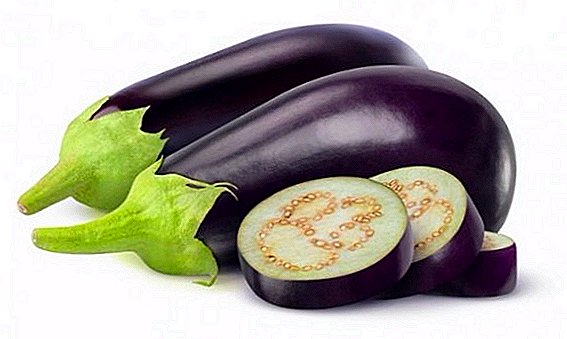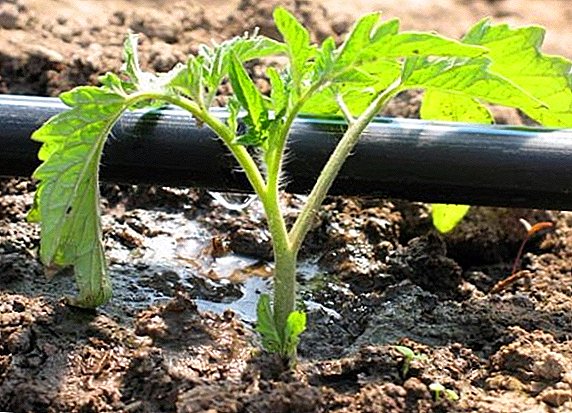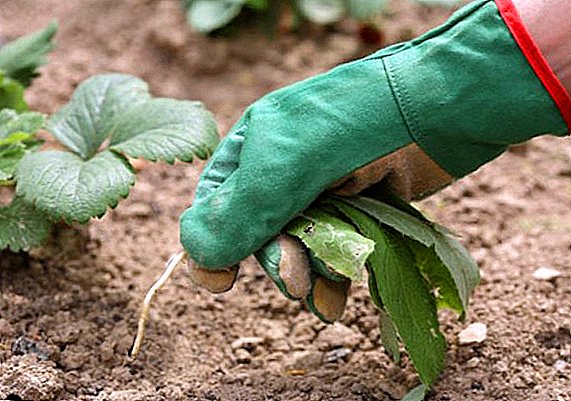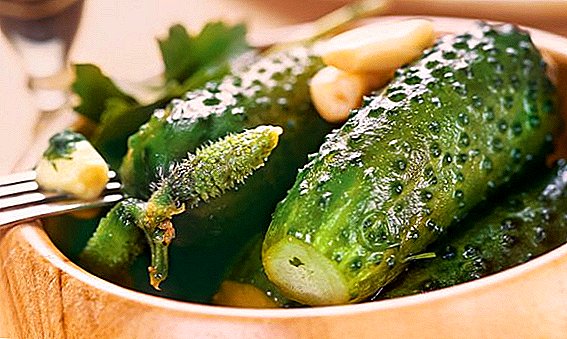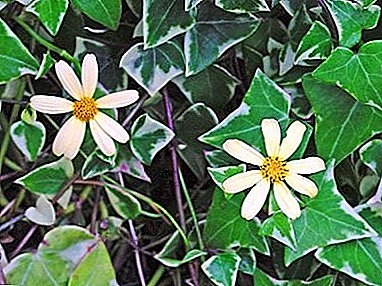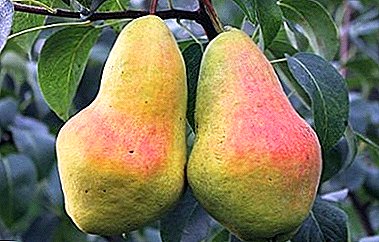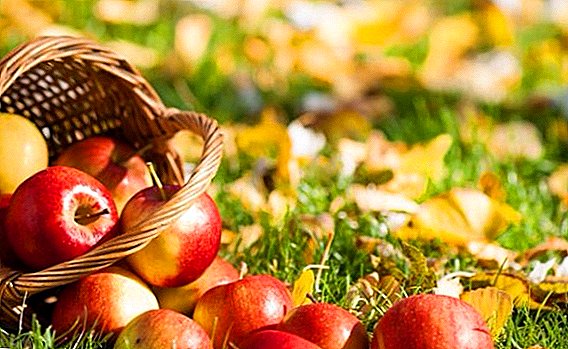 Creepers are usually associated with rainforests, where they, in attempts to reach the sun, often create impassable thickets. However, their relatively similarity, relatively small in length, called "Siberian prince" - common in areas with a continental climate, in particular, in Siberia and the Far East. This plant is not only decorative and medicinal, but often used as an insecticide.
Creepers are usually associated with rainforests, where they, in attempts to reach the sun, often create impassable thickets. However, their relatively similarity, relatively small in length, called "Siberian prince" - common in areas with a continental climate, in particular, in Siberia and the Far East. This plant is not only decorative and medicinal, but often used as an insecticide.
Features and application of the plant
The prince belongs to the family of Buttercups and is a unique plant - it climbs over trees, forms thickets and has excellent decorative properties. Its leaves with twisting petioles provide a spectacular appearance, and bell-shaped flowers give solidity and even some stiffness.
Familiarize yourself with other members of the Buttercup family: the basilus, black cohosh, hellebore, swimsuit, anemone, aquilegia, backache, aconite of the wolf and clematis.
Shoots of the prince of Siberia can grow up to three meters, twisting around trees, bushes or pillars. Flowers are usually white or with small inclusions of yellow. There are varieties with bells of pink, blue, purple or violet colors.  In folk medicine, used grass, which should be harvested in the period from the beginning of flowering until the formation of fruits. Siberian liana is used in various recipes - from ordinary tea to medicinal infusions in oncology.
In folk medicine, used grass, which should be harvested in the period from the beginning of flowering until the formation of fruits. Siberian liana is used in various recipes - from ordinary tea to medicinal infusions in oncology.
Medicinal properties
Like many other plants that managed to survive and develop in harsh natural conditions, the prince has in its structure useful substances that can be used to treat the following diseases:
- diabetes;
- rheumatism;
- diseases of the respiratory system;
- tuberculosis;
- headaches;
- joint pain;
- paralysis;
- diseases of the gastrointestinal tract;
- oncological diseases.
Important! Fresh shoots of the prince are poisonous, but dried leaves and shoots can be used for infusions.
As for oncology, in this case the culture is used to treat and prevent tumors of completely different organs (for example, the stomach, intestines, kidneys, liver), but in any case, consultation of a competent specialist is very important before use.
Main types
Culture is spread in the northeast of the European part of the Russian Federation, in Siberia, in the mountains of Central Asia, on the rocky banks of the Far Eastern rivers. Also, the prince chooses rocky slopes in deciduous or coniferous forests. 
Knyazhik Siberian
This vine is considered the most beautiful in the taiga. It is capable of wrapping around any available support and blooming profusely with beautiful placers of bluebells. Flowers can be very different colors: from white to dark purple. Knyazhik adorns the dark-gray taiga with all its appearance, and during the flowering period, with its aroma is able to literally captivate people passing by.
Did you know? Botanists are still arguing about whether the prince is in the genus "Clematis". Some scientists argue that they are of the same genus, others categorically distinguish the plant into a separate species.
Alpine knight
This resident of the center of Europe blooms with blue-violet flowers at the beginning of summer. A pleasant property for summer residents of this species is its re-bloom in August. The Alpine variety is also a wonderful honey plant and is often used for landscape design, as a plant for covering soil, weaving pillars or trees. 
Knyazhik krupnolepostny
The species is distributed in the Far East, in Eastern Siberia, Korea and China. This culture has characteristic large flowers in color from blue-purple to black-violet. Effective flowering occurs in late May - early June. In nature, the plant is extremely rare, so you can see it in the botanical gardens in the north of the country (St. Petersburg, Apatity). 
Prince of Okhotsk
It grows in Primorsky Krai, in the east of Siberia, northern China and in North Korea. It prefers stony slopes in forests at an altitude of 600-800 meters above sea level. Pink or blue-purple, fairly large flowers, appear in early June and bloom until mid-July. 
Important! All plants of this species are wonderful honey plants. During flowering, bee life is boiling around them.
The soil for the prince
The plant feels fine in loose alkaline or neutral soil. Watering should be moderate without stagnation of water, and the site for planting is selected in a sunny place.
Some shading is allowed, but you should not be too zealous with watering. When transplanting a prince, the pit needs to be made fairly deep - about 50 cm deep and 50 cm in diameter.
Care of the prince
Caring for a culture is quite simple, so this type is suitable for beginner gardeners. The plant is unpretentious and does not require any special conditions. During the summer season it is necessary to carry out at least three fertilizing with mineral and organic fertilizers.
Did you know? Knyazhik is often used as an insecticide, because with it you can deal with bedbugs and domestic ants.
This is done alternately - from the beginning of growth to the formation of buds. In the soil prepared in advance, the prince can not be fed in the first year of life.
Pruning is carried out with the growth and drying of shoots. This procedure should be carried out in the spring to form a bush, and during the summer you only need to remove damaged and dry stems.  In a garden, a plant can grow into its will, but if it is an ornament to the main entrance, it should be regularly formed. The lower part of the stems can be shaded by planting a host plant at a distance of 50 cm from the vine.
In a garden, a plant can grow into its will, but if it is an ornament to the main entrance, it should be regularly formed. The lower part of the stems can be shaded by planting a host plant at a distance of 50 cm from the vine.
Collecting and harvesting
In herbalists there is no information on the preparation and use of plants for therapeutic purposes. And, given the fact that the prince is poisonous, all the more you should be careful with all recipes with its use.
Like a prince, a belladonna, a soft bed-dresser, a red elderberry, a cockle-tree, a wolfberry, a dodder, a hogweed, a yew berry and a autumn crocus are poisonous plants, but with proper treatment they can cure many diseases.
The leaves and stems are collected during flowering and dried in a shaded ventilated room. Dried material unfolds in bags of natural fabric and stored away from moisture.
Contraindications
As mentioned above, the fresh plant is very poisonous, but after drying it is applicable for medicinal purposes. However, in any case, it should not be used by pregnant and lactating women. Particular attention should be paid to the use of drugs from the prince also to those who have problems with the cardiovascular system, since the substances that make up the plant, can speed up the work of the heart.  No matter how attractive the described plant may seem to you, due to the toxicity of the culture, it is necessary to consult a doctor before starting to take drugs with the content of the prince. It can quite bring both esthetic pleasure, and therapeutic effect, and considering its insufficient knowledge, it is possible to hope, for rather serious medicine from various diseases, including oncological.
No matter how attractive the described plant may seem to you, due to the toxicity of the culture, it is necessary to consult a doctor before starting to take drugs with the content of the prince. It can quite bring both esthetic pleasure, and therapeutic effect, and considering its insufficient knowledge, it is possible to hope, for rather serious medicine from various diseases, including oncological.




